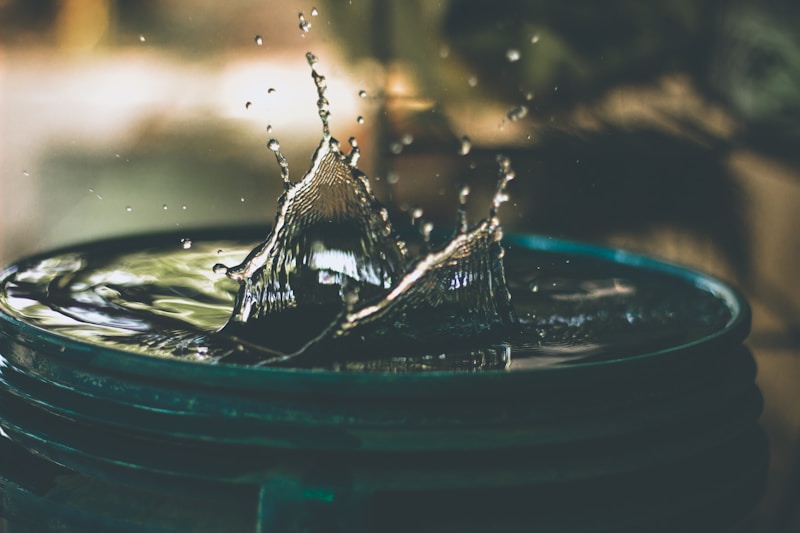Comprehensive Water Temperature Guidelines for Optimal Comfort and Safety
Comprehensive Water Temperature Guidelines for Optimal Comfort and Safety
Water temperature plays a crucial role in various aspects of our daily lives, from bathing and swimming to cooking and drinking. Understanding water temperature guidelines can help ensure safety, comfort, and optimal performance in various activities. This article provides an in-depth look into recommended water temperatures for different scenarios, insights into the importance of temperature control, and tips for maintaining appropriate levels.
The Importance of Water Temperature Guidelines
Water temperature can significantly affect our health and well-being. Whether you are running a bath, preparing food, or maintaining a swimming pool, following specific temperature guidelines is essential to prevent potential hazards such as scalding and ensure the best experience.
Common Areas Affected by Water Temperature
There are several areas in our lives where water temperature plays a vital role:
- Cooking
- Bathing
- Swimming
- Drinking
Cooking and Food Safety
When it comes to cooking, water temperature is critical for food safety. Water temperature guidelines help ensure that foods are cooked properly to eliminate harmful bacteria. Here are some recommended temperatures for various cooking methods:
| Cooking Method | Recommended Water Temperature |
| Boiling | 100°C (212°F) |
| Poaching | 70-85°C (160-185°F) |
| Steaming | 100°C (212°F) |
| Blanching | 100°C (212°F) |
Using the appropriate water temperature not only enhances the flavor of your meals but also ensures food safety by killing harmful bacteria that could cause foodborne illnesses.
Bathing and Showering
For bathing and showering, it's important to adhere to water temperature guidelines to avoid burns or discomfort. Optimal water temperatures for bathing typically range from 37°C to 40°C (98.6°F to 104°F). Here are some guidelines:
Bath Water Temperature Chart| Bathing Activity | Recommended Water Temperature |
| Infants | 37-38°C (98.6-100.4°F) |
| Children | 37-39°C (98.6-102.2°F) |
| Adults (Relaxing Bath) | 37-40°C (98.6-104°F) |
| Adults (Therapeutic Bath) | 40-43°C (104-109.4°F) |
Keep in mind that temperatures above 43°C (109.4°F) can be dangerous, leading to burns, particularly in those with sensitive skin or health conditions.
Swimming Pool Water Temperature
The water temperature in swimming pools can significantly affect comfort and safety. The ideal swimming pool water temperature varies based on the activity and the age group:
| Activity / Age Group | Recommended Water Temperature |
| Recreational Swimming | 26-28°C (78-82°F) |
| Competitive Swimming | 25-27°C (77-81°F) |
| Children | 30-32°C (86-89.6°F) |
| Aquatic Exercise | 27-29°C (80.6-84.2°F) |
Different water temperatures cater to different needs; for instance, warmer water is more suitable for children, while cooler temperatures are better for competitive swimming.
Drinking Water Temperature
The temperature of drinking water also plays a role in hydration and palatability. While optimal drinking temperatures can vary based on personal preference, general recommendations are:
- Cold Water: Approximately 0-10°C (32-50°F) for a refreshing taste
- Room Temperature: Around 20-22°C (68-72°F) for easy consumption
- Warm Water: Approximately 37-40°C (98.6-104°F) for soothing effects
Understanding these water temperature guidelines can help improve hydration and is particularly helpful in specific scenarios, like after exercising or during illness.
Effects of Water Temperature on Health
Temperature can have various effects on health and well-being. Here are some key points to consider:
- Hot water can help relieve muscle tension and improve circulation.
- Cold water can reduce inflammation and soreness.
- Extreme temperatures, either hot or cold, can lead to health risks such as burns or hypothermia.
Conclusion
In conclusion, adhering to proper water temperature guidelines is essential for safety and comfort in various activities including cooking, bathing, swimming, and drinking. Awareness of the recommended temperatures for each activity can prevent accidents and enhance the overall experience. Always be cautious when dealing with extreme temperatures and consult local regulations or resources for specific guidelines based on your area.
By keeping these temperature recommendations in mind, you can ensure a safe and enjoyable experience, whether in the kitchen, bathroom, pool, or when hydrating. Remember to adjust temperatures according to the specific needs of children, elderly, or individuals with health conditions to ensure safety for everyone.

